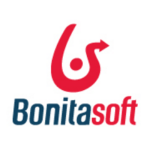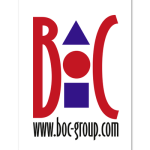What is our primary use case?
We have implemented an end-to-end workflow solution for a private bank for their loan origination system. We have also implemented a claims reimbursement system, and item-level permissions for SharePoint lists using Nintex workflows.
For end-to-end approval workflows, Nintex workflows are deployed on the SharePoint front-end servers. The claims reimbursement workflows are end-to-end workflows for approvals of claims within the organization. Those for financial services include loan origination, legal and compliance, and core banking system workflows.
Resource management and employee onboarding workflows have also been created to automate the employee onboarding process.
How has it helped my organization?
From what was a 20 to 30-day approval cycle, it has now come down to between two and three days for approving loans and claims.
SharePoint does not support item-level/row-level permissions, and we were able to implement the solution using Nintex workflows.
The product and its features have improved the productivity and efficiency of the process flow within the application and systems, providing end-to-end connectivity to all systems.
Tracking of all approvals minutely, audit logs for issues, and helping to find out any non-compliance in the process flows.
What is most valuable?
State machine and sequential Workflows are excellent features for creating complex state machine and sequential workflows that integrate with major Microsoft products like CRM Dynamics, SAP, and Peoplesoft.
We can create workflows for document management, publishing workflows, and create other custom workflow solutions spanning multiple roles and levels of approvals.
It has integration with BI and Analytics tools, and RPA toolsets as well.
Custom integration using REST APIs for Line of Business applications is helpful.
It provides good audit and reporting for workflow tasks to detect and resolve issues.
What needs improvement?
We had issues with long-running workflows for approval processes. While the workflows are waiting for the action to be taken by the approvers, sometimes the approval takes time and workflows do not respond to the actions after a certain number of days.
We would like to design parallel workflows and long-running workflows, along with new features for connecting to cloud-based systems.
When the workflow tasks increase in number, there are issues with performance that need to be addressed.
For how long have I used the solution?
We have been using the Nintex workflow solution for close to eight years.
What do I think about the stability of the solution?
The Nintex solution is stable for small to medium workflows and even, to an extent, large workflows.
What do I think about the scalability of the solution?
The Nintex solution can scale from a single server to multiple server deployments to manage workloads.
How are customer service and technical support?
Good customer support in terms of help desk, and support for fixing product issues.
How was the initial setup?
The initial setup was straightforward, with appropriate demos, documentation, and user manuals.
What about the implementation team?
Implementing the workflows as a development vendor for a major financial services organization, real estate firms, and insurance companies.
What was our ROI?
Looking at the capabilities and usage for all process flows to be automated within multiple systems and applications throughout the enterprise, the ROI will be met and break-even reached within a year.
Which deployment model are you using for this solution?
On-premises
Disclosure: I am a real user, and this review is based on my own experience and opinions.


















Hi Milford, I just wanted to reply to your server intensive comment. Nintex uses Windows Workflow Foundation - the same engine that drives any workflow in SharePoint. This engine uses the Web Front End servers, and is a resource intensive process. However, with planning and best practices your farm can more than adequately support the needs of your users and workflow consumption demands. It does however require some capacity planning and some best practice design within the farm and workflows respectively.